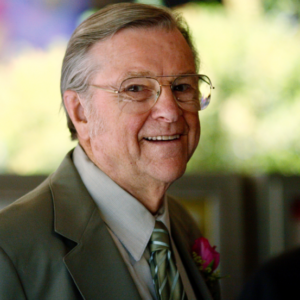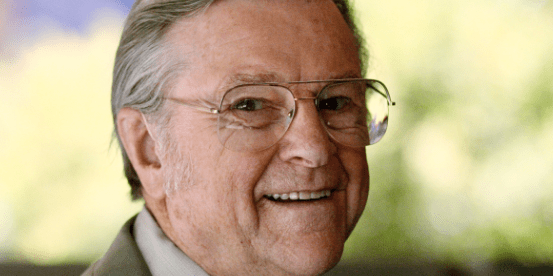
Emeritus professor Robert Cannon, an early proponent of autonomous robotics and cofounder of Stanford’s Aerospace Robotics Lab, died at the age of 93 on Aug. 15 at Stanford Hospital.
Cannon, the Charles Lee Powell Professor of Aeronautics and Astronautics, Emeritus, served as the chair of his department at Stanford.
Cannon’s successor as chair, Paul Pigott Professor of Engineering, Emeritus George Springer, told Stanford News that Cannon was “one of the best department chairs [he] ever worked with.”.
“He always hired people who he had faith in and let them loose,” Springer said. “He provided everything they needed to succeed. He was also always optimistic and upbeat.”
Born in Toledo, Ohio on Oct. 6, 1923, Cannon earned his bachelor’s degree in engineering. He served in the U.S. Navy, spending time working with new radar technology aboard a destroyer. After his time in the Navy, Cannon helped design a hydrofoil sailboat that remained the fastest sailboat in the world for 30 years.
Cannon served in various government positions — including chief scientist for the U.S. Air Force — and as chair for several scientific and engineering boards.
He first came to Stanford in 1959 to help create the University’s Guidance and Control program, an area within aeronautics and astronautics. After a brief stint at the California Institute of Technology, Cannon returned to Stanford in 1979 as the chair of the department of aeronautics and astronautics, holding the position until 1990 and retiring from teaching in 1995.
After retirement, he continued to live on campus and assist with the department.
Professor of Aeronautics and Astronautics Stephen Rock Ph.D. ’78, who co-developed the Aerospace Robotics Lab (ARL) with Cannon, described Cannon as a forward-thinker who developed ideas that the ARL is still producing today.
Speaking to Stanfore News, Rock said Cannon was “always fun to work with” and praised his ability to identify and attract “brilliant students” to his lab.
“He envisioned sophisticated, flexible robots that could carry out complex tasks in space under high-level human control and over large time constants,” Rock said. “He had the vision to see what this new technology could be used for and the problems people had.”
When Cannon first came to Stanford in 1959, he was part of a team of researchers that proposed a spinning gyroscope be sent to space in an effort to measure Albert Einstein’s general theory of relativity. Named Gravity Probe B, the project eventually launched in 2004. After several years of research, the project’s data was able to verify Einstein’s theory. Although he did not lead the study, Cannon played a prominent role in its implementation.
Despite this dedication to his work, Cannon valued family above all else.
“I am proud that we are engaged in a research effort that is 10 million times more difficult than what anyone has attempted before, but in my scale of values, my now-grown family – six boys and a girl – is definitely more important,” Cannon said while he was developing the Gravity B Probe Project.
Cannon is survived by his seven children and second wife, Vera Berlin Cannon, as well as their grandchildren and great-grandchildren.
A memorial service in his honor will take place Sept. 23, at 2 p.m. at the Valley Presbyterian Church, located at 945 Portola Road, Portola Valley.
Contact Gillian Brassil at gbrassil ‘at’ stanford.edu.
